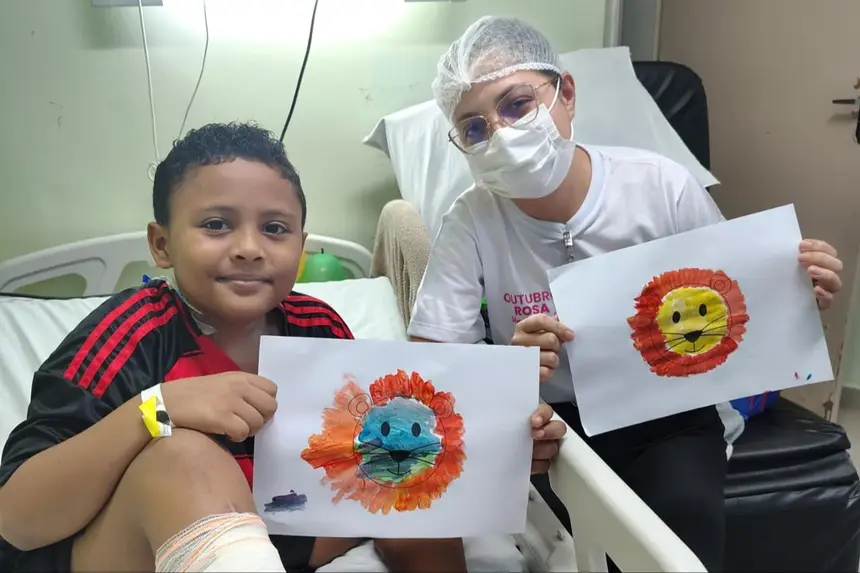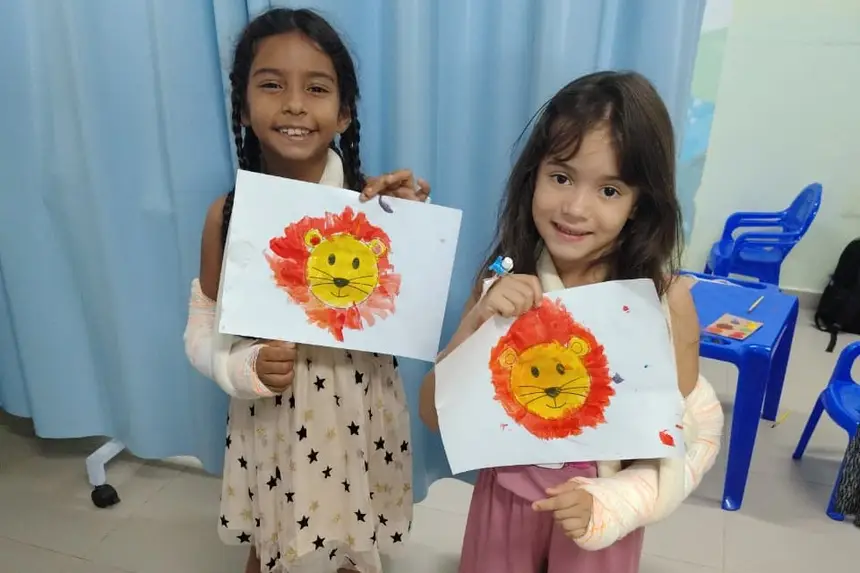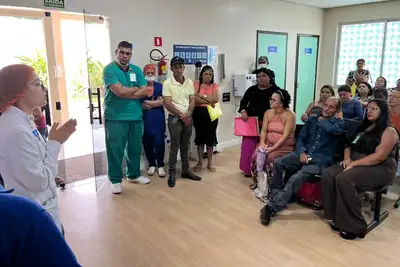Art Therapy Helps Welcome Long-Term Patients at Santa Rosa Hospital
The Pará Government unit seeks to complement care and welcome with a psychotherapeutic approach that combines art and active listening

In Abaetetuba, the Santa Rosa Regional Hospital of Baixo Tocantins (HRBT-SR) has implemented art therapy as a way to enhance care for hospitalized patients. The practice is a tool that helps patients find ways to face difficulties, in addition to promoting the humanization of care by allowing personal expression and providing a conducive environment for leisure, alleviating the hospital atmosphere.
Hospitalization, for patients, is often a difficult time, filled with emotional stress, social isolation, physical discomfort, loss of control, and impact on quality of life. Furthermore, the absence of daily routine and separation from loved ones can generate anxiety and loneliness. In light of this scenario, Santa Rosa Hospital emphasizes the importance of complementary approaches to minimize the impacts of hospitalization and offer a more humanized experience.
Thus, the Art Therapy Project emerged, a psychotherapeutic intervention that combines creative stimulation — through coloring and painting activities — with the attentive listening of the healthcare team to children hospitalized in the pediatric ward of the medical clinic.
Art therapy, aimed especially at patients undergoing prolonged treatment, aims to promote manual artistic activities that help create bonds and recover the uniqueness of each person. The drawings and activities are chosen according to individual preferences, seeking to recover aspects of each patient's identity.
This creative activity has shown positive results, such as reduced stress, increased motor coordination, strengthened social interaction, elevated spirits, and decreased anxiety. For Claudemir Guimarães, the general director of Santa Rosa Hospital, actions like this strengthen the unit's mission to enhance the patient's experience.
"Every effort invested in humanization projects aims to create an environment that transcends traditional treatment, with the genuine purpose of humanizing healthcare, recognizing the uniqueness of each person. It is a simple action, but it completely transforms the way we care for the patient," says Guimarães.

The Importance of Art Therapy - According to Antonilda Pinheiro from the Humanization sector, art therapy at HRBT-SR is an essential tool for promoting humanization during long hospitalizations. The psychology service recovers part of each patient's life story, using drawings, images, and symbols that represent them.
The administrative assistant from the Humanization sector emphasized: "Art therapy is a valuable resource in humanized care, as it offers moments of lightness, distraction, and creative expression, helping children cope with the hospitalization period in a calmer and more positive way."
Antonilda adds: "It is considered an effective psychotherapeutic resource, particularly in situations of prolonged hospitalizations. The psychology service seeks to restore the patient's subjectivity, focusing on motor, cognitive, and psychic levels. The choice of drawings, based on the stories, interests, and personal symbols of each child, aims at humanizing care and providing comprehensive assistance during hospitalization."
At Santa Rosa, art therapy has been fundamental in making patient treatment more humane. Ray Henrique Cardoso, 8 years old, one of the project participants, shares his experience.
"Art therapy in the hospital goes beyond a simple activity; it is a process of personal transformation. When I dedicate myself to art, I realize that I can push my worries away and focus completely on drawing. This offers me an escape from the days of hospitalization and has a very positive effect on my well-being," Ray reports.
Actions like this highlight Santa Rosa Hospital's commitment to providing care that goes beyond conventional medical treatment, emphasizing the importance of approaches that integrate emotional and psychological care with physical health.
Text: Wellington Hugles – Ascom/HRBT-SR









